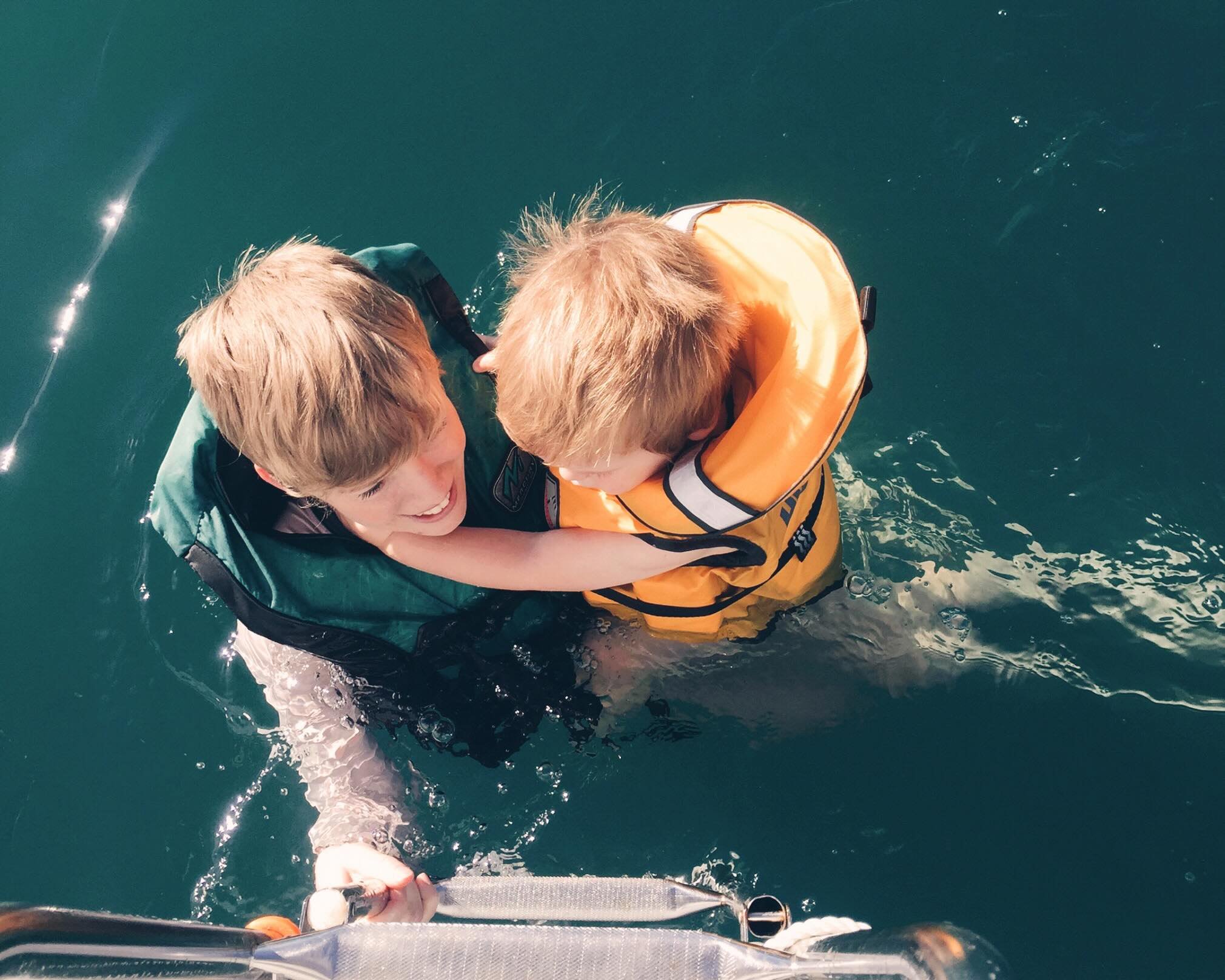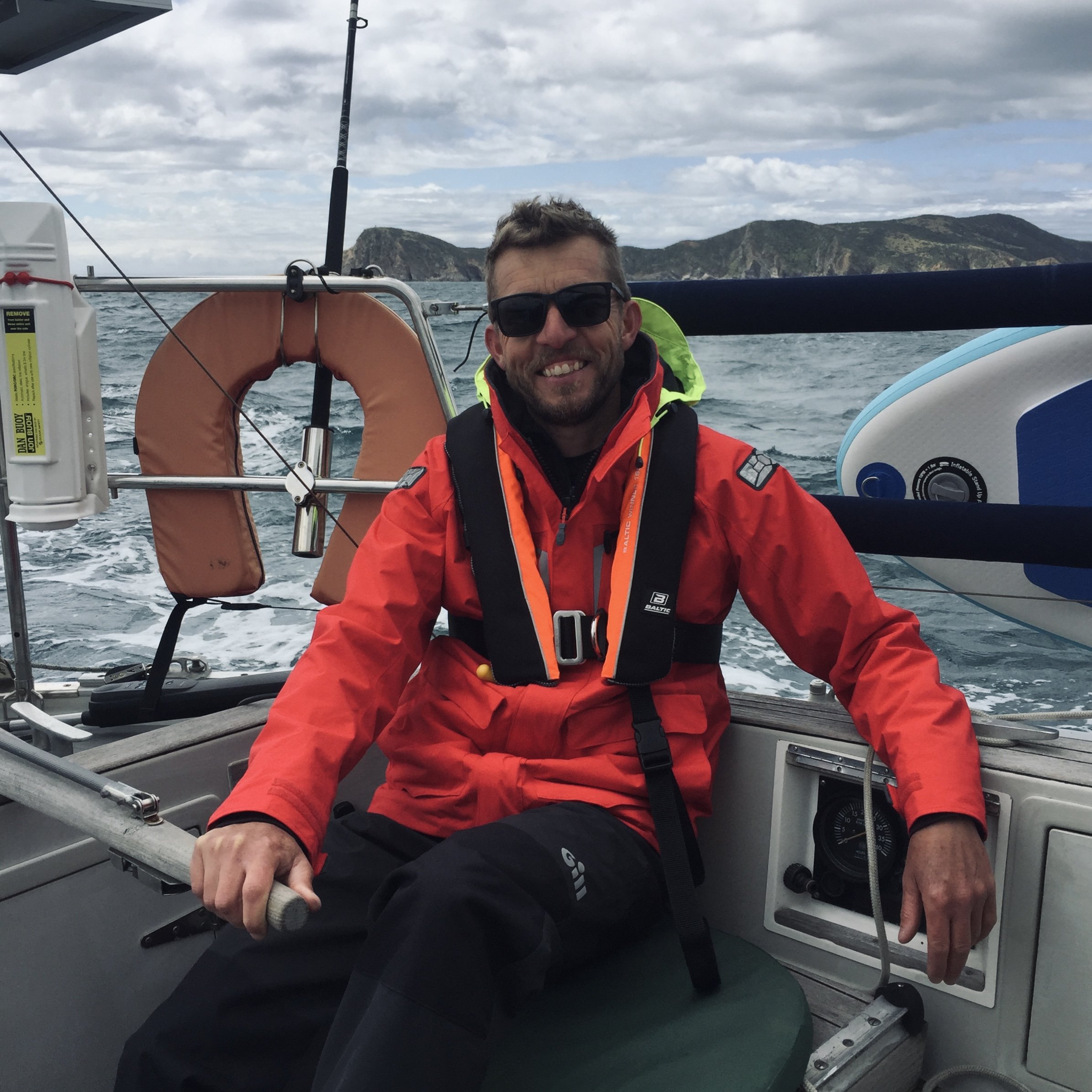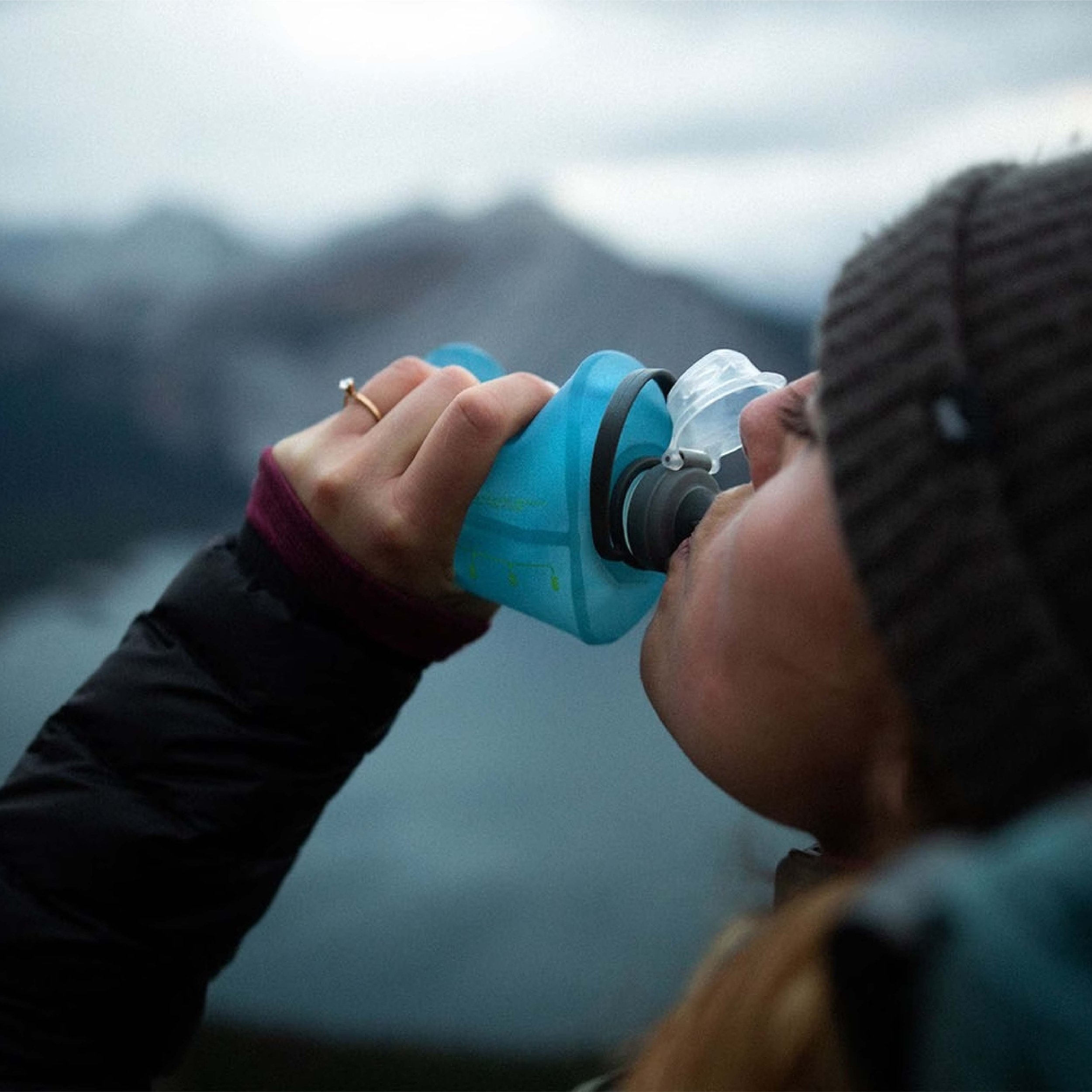The Ultimate Guide to Choosing the Best PFD and Lifejacket
Wearing a lifejacket or personal flotation device (PFD) may just save your life. If you’re out on the water, there’s always a chance something could happen. Globally, drowning is one of the top causes of accidental death. In Aotearoa, New Zealand, two-thirds of those who die in recreational boating accidents each year could have been saved if they wore a life jacket. It’s the first piece of survival safety kit you should buy and wear — whether that’s for yourself or family. Since you’re here, I’m betting you’re keen to keep survival odds in your favour.
Start shopping at any marine or watersport store though and you’ll see a multitude of different life jackets and vests and floaty looking supports. How do you choose one that suits your needs? And what if you make the wrong choice?
This beginner’s guide will give you all the technical life jacket information simply, so you can feel confident buying the right PFD for you.
-
What's a PFD?
What's the difference between types of life jackets?
Choosing the best PFD for you - 6 steps
1. Decide on the buoyancy you need
2. Match the style of PFD to your activity
3. Consider the Climate + Season + Weather conditions
4. Decide on a PFD style: Standard Foam | Inflatable | Hybrid
5. Manual or Inflatable PFD
6. Find the right Size and Fit
Extra tips
Wear a PFD anytime you’re out on the water
What’s a PFD?
A Personal Flotation Device (PFD) is designed to keep you afloat in the water. Technically this term actually covers both buoyancy aids and life jackets, but there’s a difference between these two items.
Buoyancy aids assist someone who is a competant swimmer to keep themselves afloat, whereas life jackets provide more substantial support and buoyancy, and are designed to rotate a person into a safe position once they fall into the water.
What’s the difference between types of lifejackets?
The major difference between PFDs is their buoyancy level, and type/style based on the kind of watersport activity and conditions they’re designed for. We’ll take a look at those different styles shortly.
Increase your chances of survival
Being out on the water – whether an ocean, river or lake is one of the best ways to experience nature. But conditions can be unpredictable and accidents on the water can happen at any time.
Wearing a life jacket can increase your chances of survival by up to four times (!) if you're immersed in cold water. Giving yourself that extra chance for rescue isn’t just peace of mind, in many countries across the world, wearing a PFD on the water is often a legal requirement. Laws can vary across countries and states — so check online with local coastguard authorities to make sure you’re staying safe and doing the right thing.
Choosing the best PFD for you — 6 steps
Decide on the buoyancy you need
Essentially, all wearable PFDs are rated based on their performance type and/or performance level aka ‘How well you’ll float’. The performance level of buoyancy is measured in Newtons. You’ll often see an ‘N’ or number rating on lifejackets which relates to this. (1 Newton is equal to 0.225lb).
Does the PFD rating matter? You betchya! This is a MAJOR part of how you’ll choose your lifejacket.
Buoyancy levels (in Newtons)
NOTE: The HIGHER the Newton ‘N’ number, the MORE buoyant the PFD is
-
Level 50 buoyancy/floating aids are designed to keep the wearer afloat, but not to turn a person up from a face down position in the water. This level is ideal for swimmers in sheltered waters or where help is close at hand. However, they do not have sufficient buoyancy to protect a person who cannot help themselves.
NB Life jackets that are rated lower than 70 are not U.S. Coast Guard approved.
Activities: Ideal for dinghy sailing, paddling and kayaking
-
Level 70 (equals 15.74 pounds of buoyancy) is the minimum US Coast Guard rated level. It’s intended for use by those who have help or a means of rescues close at hand, or who are near a bank or shore. These devices have minimal bulk, but cannot be expected to keep the user safe for a long period of time in disturbed water.
Activities: Inshore sailing and sheltered waters
-
Level 100 life jackets are designed for those who are non-swimmers or may have to wait for rescue but would do so in sheltered and calm waters. It may not have sufficient buoyancy to protect a person who is unable to help themselves and may not roll an unconscious person onto their back.
Activities: Inshore sailing and sheltered waters
-
Level 150 life jackets are designed for use on coastal and offshore waters where a high standard of performance is required. It should turn an unconscious person onto their back and requires no subsequent action by the wearer to keep their face out of the water. Yet, its performance may be affected if the user is wearing heavy and/or waterproof clothing.
Activities: Offshore and coastal sailing
-
Designed for offshore use under extreme conditions, often for those wearing heavy protective clothing that may adversely affect the self-righting capacity of lesser lifejackets. Like level 150, this life jacket is designed to ensure that the wearer is floating in the correct position with their mouth and nose clear of the surface of the water.
Activities: Offshore use in severe conditions
Happy in the Baltic Winner 165N automatic inflatable lifejacket — note the safety harness attachment point with the harness (in yellow) clipped on
A short note on PFD performance standards around the world
Many countries and regions have their own water safety regulations for PFDs in addition to meeting globally recognised regulations such as the International Standards Organisation. For example, all new lifejackets sold in the UK, Republic of Ireland and elsewhere in Europe are required to meet the International Standards Organisation standard ISO12402, and New Zealand has compliance with their types too. It’s not something we need to go into depth on right here, as we’ll cover the basics for you to make a good decision on the best lifejacket for you. But it’s worth pointing out so you can do further research if you’re moving to a new country, or are looking to get out on the water in an area new to you.
If you’re in the States, here are the specific USCG categories that rate PFD performance.
Note: Type 1 is the highest protection, Type 5 is the lowest.
-
The United States Coast Guard categorises the levels of PDF into five types as below.
Type I - Offshore Life Jackets
This has the greatest required inherent buoyancy and turns most unconscious persons in the water from a face down position to a vertical and slightly backward position, therefore, greatly increasing one's chance of survival.Type II - Near-Shore Vests
This is intended to turn some unconscious persons from a face down position in the water to a position where the wearer's respiration is not impeded.Type III - Flotation Aids
This is intended to support a conscious person in the water in an upright position. This type of device is not required to turn an unconscious person in the water from a face-down position to a position where the wearer's respiration is not impeded.Type IV - Throwable Devices
This is a throwable device and is not designed to be worn. Thrown to victim in water to grasp until rescued. Examples are horseshoe buoys, life rings, and floating cushions.Type V - Special-Use Devices
This is approved for restricted uses or activities such as boardsailing, or commercial white water rafting. These devices may not be suitable for other boating activities. The label indicates whether a particular design of Type V can be used in a specific application, what restrictions or limitations apply, and its performance type.
2. Match the style of PFD to your activity
When it comes to choosing the best PFD you’ll need to consider the type of activity, and how far from rescue you’ll be (eg in a sheltered harbour vs off the coast), and the conditions you’ll be in (eg tropical water vs freezing).
The type and style of PFD protection to look for will depend on the water activity, safety risk, and how far you are from rescue. Here are some guides:
Dinghy Sailing: Since you’ll be actively sailing and need plenty of freedom to move around the boat, look for a slimmer design with nothing that can catch on boat lines or rigging. Because safety boats are usually nearby, a 50N or 70N buoyancy aid will do. There’s plenty of racing style vests that are super comfy to wear, and offer good flotation with ease of movement.
Inshore/Sheltered Sailing: A 50N PFD is sufficient for swimmers, while non-swimmers should choose a higher buoyancy level. However, you can always choose a higher floatation level if needed or if it brings more peace of mind while out on the water.
Coastal Sailing: Coastal sailing requires a high level of safety, which includes a higher Newton life jacket of at least 100N. A deck harness is also recommended when needed — for example in rough weather, or while night sailing. Many life jackets have a ‘tether point’ for the harness to connect to, to help keep you onboard.
Offshore Sailing: For serious offshore sailing, a minimum of 100N is recommended. Offshore jackets will have the highest level flotation ratings and performance in rough weather. Additional features will be included such as a sprayhood, emergency lights and mounts for AIS and PLBs (both transmit your GPS location for rescue).
Kayaking: 50N Buoyancy vests that are cut away around the shoulders and the arms give you the best freedom of movement for paddling and swimming. The key is to find the right fit so if you’re in the water it stays in place without trying to pop over your head. Look for adjustable straps or drawstring that pull securely around the chest.
Paddleboarding: Inflatable waist belt PFDs (50+N) are popular for confident swimmers on a SUP in warmer waters. Alternatively, a standard buoyancy vest or hybrid vest is a great option especially in cold water. My favourite is the Spinlock ALTO Belt Pack which I’ve been testing out. That’s not to say you couldn’t wear a life-jacket (such as a manual inflatable) — you can wear whatever is comfortable, as long as it’s the right buoyancy for you and appropriate for the conditions.
An inflatable waist belt PFD is fuss-free and easy to wear while paddleboarding
3. Consider the Climate + Season + Weather conditions
If you think about being in the water for any length of time, the climate, season and conditions are an important factor in how comfortable you’ll be, and your chances of survival.
For example: Stand up paddleboarding in California in hot, calm conditions — you may go for a manual inflation waist belt PFD that allows maximum ventilation and movement, so you can stay cool while paddling. However, stand up paddleboarding in Ontario in winter, with frigid water temperatures, you’d likely go for a buoyancy life vest. There are serious implications with falling into cold water such as cold shock.
Cold shock
Cold shock refers to the physiological response of the body to sudden exposure to cold, particularly cold water. This response includes rapid breathing, an increased heart rate, and elevated blood pressure. It can lead to hyperventilation, loss of motor control, and, in severe cases, can be life-threatening due to the potential for drowning or cardiac arrest. It’s is a significant concern when falling into cold lakes or seas. Without a lifejacket even the most competent swimmer will suffer from ‘swim failure’ after around 30 minutes of swimming in cold water.
4. Decide on a PFD style: Standard Foam | Inflatable | Hybrid
Standard
The ‘standard’ PFDs are the ones made out of buoyant foam — they’re non-inflating. You’ll see plenty of watersport vests which are constructed from panels of closed-cell foam, such as polyethylene or PVC foam — used because it’s super floaty, lightweight, and provides insulation against the cold.
Pros: Low-maintenance, inherently buoyant, versatile, provides pockets
Cons: Bulky, can be hot in warm weather
Inflatable
An automatic inflatable jacket fully inflated. Note the gas canister on the left, and the red manual blow inflation tube on the right.
There’s no foam in an Inflatable PFD, instead they contain a small bottle filled with carbon dioxide (CO2) attached to a firing head which inflates the PFD when activated.
Pros: Comfortable, slim profile, great mobility, cooler to wear
Cons: Requires inflation, regular maintenance, not suitable for high-impact activities (like zooming around on a high-speed donut!)
Hybrid
A Hybrid PFD gets its base buoyancy from foam material, but provides some extra lift from an additional CO2 cylinder and chamber that can inflate to give you the additional buoyancy.
Pros: Great for watersports, full-time buoyancy of a foam PFD with the mobility of an inflatable
Cons: More expensive, requires inflation, regular maintenance
5. Manual or Inflatable PFD
There are three types of inflation methods for PFDs:
Manual Inflation: You have to physically pull a cord to release the CO2 into the chamber and the jacket then inflates. Suitable for those who can react quickly.
Automatic water-activated Inflation: Activates upon water immersion. Most people choose automatic inflation, as it ensures safety if they fall in the water, whether they are conscious or not. They also have a manual cord that can be pulled to inflate the vest.
Hydrostatic (or Hammar) | A form of Automatic pressure-activated Inflation: Activates under water pressure — so a few centimeters below the surface. This means it can be worn in the rain or soaked by seaspray but won’t go off unless fully submerged in water.
Note: These three styles also include a manual blow tube to inflate the PFD manually by breath, for emergencies.
6. Find the Size and Fit
The last and very important part of choosing the right PFD is to make sure it fits you perfectly!
Guess what? All adults, regardless of their size, weigh approximately 5kg/11lbs when immersed in water! Which means you don’t need a higher Newton level PFD the bigger you are. You’ll see PFDs usually come in a broad range of sizes, but that’s just for the ability to fit the jacket and adjust the straps comfortably.
For Adults: Size based on chest circumference
For Kids: Size based on weight categories: infant, child, youth
Begin by loosening all the straps, unzipping all the zippers, and undoing all the buckles. Next, put the gear on over your normal outdoor gear, and start tightening the straps from your waist upwards, tucking in any excess strapping as necessary. Make sure to adjust the shoulder straps so they’re comfy!
Look for: A life jacket should be snug but allow for movement. You don’t want it to ride up or move around too much. Pretend you’re doing your sporty thing — wear your typical gear, move around — does it feel comfy?
Test: Lift the jacket at the shoulders; it shouldn't move significantly. Secure all straps properly, especially the crotch strap (And yes, no-one likes the crotch strap but it’s an important safety feature to make sure your jacket stays on!)
Extra tips
Bright colour PFDs will improve your visibility (as will reflective strips)
Buy a safety whistle to attach to your PDF (some PFDs come with one) — they’re an excellent way of getting attention if you need help
Look for extra features like a grab handle — for pulling someone out of the water by their jacket (great for kids!)
Put a survival or ditch bag together too for water emergencies
In Summary
There’s A LOT to consider when you first look at buying a PFD, but now you’re familiar with the different types and styles it becomes easier to pick out the exact one you need. I hope this article has been helpful in helping you make an educated purchase. But buying the right one is only half the goal. The other half? Actually wearing it! So, find a jacket that’s comfy (we love our Spinlock Deckvest LITE+ jackets), and stay safe on the water.























